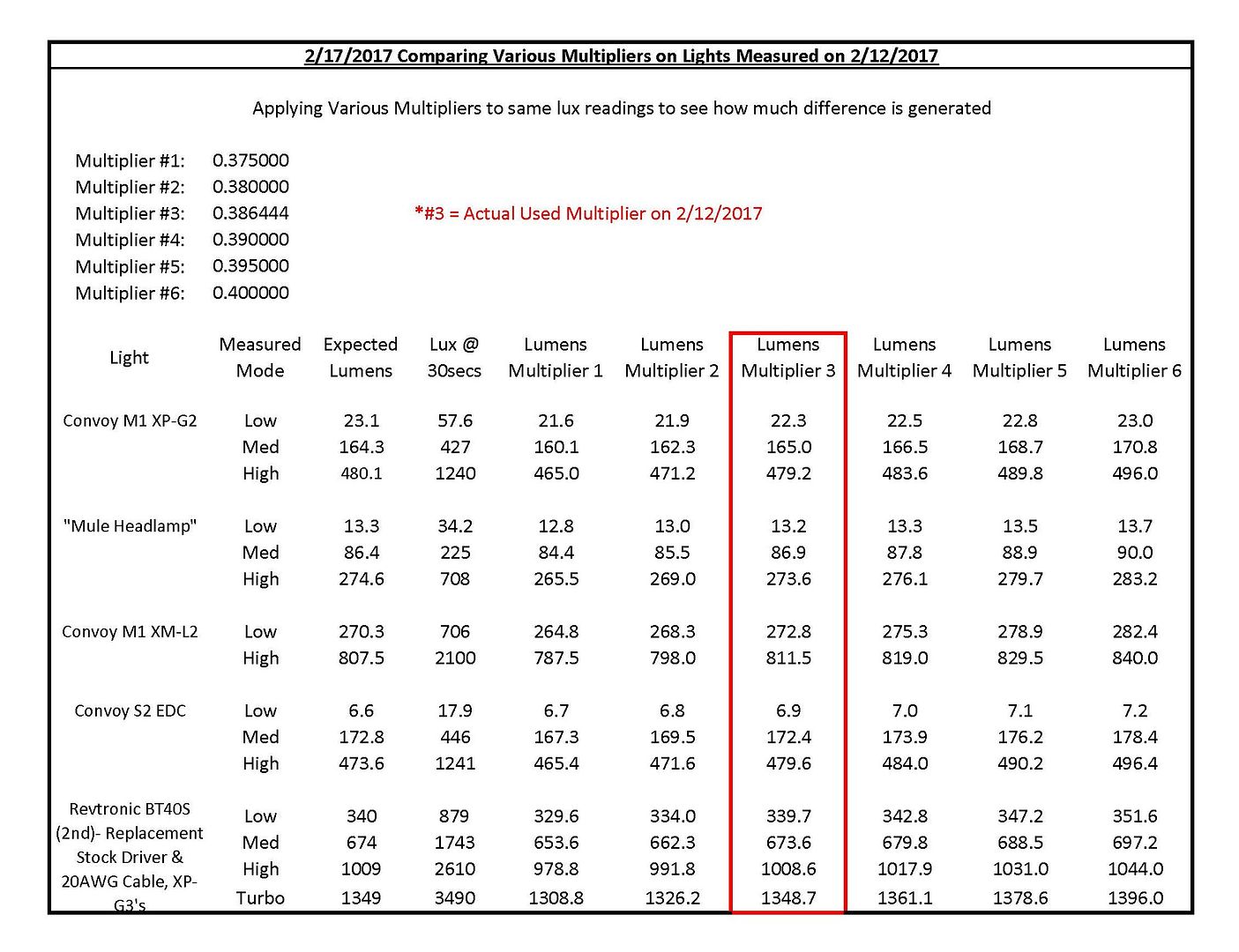I have a notebook where I collect my findings, and would be happy to share them if someone were to create it. I don’t have a lot of time to create the document at the time being though.
Yeah I don’t have a lot of time either, plus I’ll disappear from BLF for 6 months at a time. I am thinking to link to a document in my signature for my own though.
Still contemplating whether or not to mess with the calibration reference light. Part of me says it’s good enough and part of me says I can do better (though usually when I move ahead with trying to do better I screw something up).
-Garry
I call my lumen the ‘djozz-lumen’ because I’m not sure if my SWM D40A on high setting, which is my single calibration source, indeed exactly puts out the specified 550 lumen. But I do know that the D40A gives very repeatably the same output, at various drainage levels of the (Eneloop) batteries. So I take very good care of my D40A (I use it for nothing else than calibrations) and I stick to this as a reference, even though the true lumen may differ somewhat, because it keeps all my measurements repeatable and comparable.
I was thinking to call my calculated lumens “GBL’s”.
-Garry
I’m back to this topic with another question. I’m wanting to buy/build a “calibration check light”. This does not need to be a light that has known ANSI lumen ratings, but rather a light I can calculate lumen output on myself (based on calibrating my sphere from other lights) and then use this 1 light as a “calibration check” prior to any use of my sphere. (Hopefully this made sense.)
So I am thinking to build a Convoy M1 with a 7135 driver and XM-L2 or XP-G2. The M1 would be more “medium sized” for my testing and has more heatsinking than an S2+. Though I’m thinking to retire my old S2 EDC (XM-L2 & 2.1A 7135 driver) and use it for this purpose (check light). Any thoughts? I’m thinking to have 2 or 3 modes but nothing high enough where output isn’t steady. I notice on my current M1 with a 3A 105C 7135 driver that high’s output slowly drops from turn on to 30 seconds, whereas low mode (15% I think) is rock steady. So I’m thinking an M1 w/105C 1.75A driver (5x350mA AMC’s) with an XM-L2 on noctigon with 3 modes around 3, 30, 100%. Or should I stick to single mode? Or keep it simpler with 2 modes? There’s no need to change the lens or add diffusing material, right? So long as whatever I calibrate it at stays the same (and the diffusion technique could wear off / scratch). I would dedicate this light to only sphere use to keep it from getting worn, lens scratched, etc. . .
Thanks,
-Garry
Repost of what I posted here.
I did a quick test of applying various sphere multipliers to readings I took on a specific date to see how much spread there would be in my readings. I use my “calibration check lights” every session, so I’m actually computing new multipliers each session (remember, I can’t count on my luxmeter being in the same perfect alignment each time, so no perfectly constant “multiplier” to use). In real world use (over the past month now) my multipliers have only ranged from 0.381 to 0.387 with 0.3865 being what seems the most consistent. Even across my measurements last year I only saw a range of 0.38 to 0.405. So here’s what I calc’d up:
Note that my “Expected Lumens” values are not necessarily known with 100% certainty. And of course the “Lumens Multiplier #3” column will closely match those values because that’s a multiplier very close to the one used to determine those values (so don’t let that fool you). This was merely done to see how far off I would be if I determined a “bad” multiplier.
-Garry
